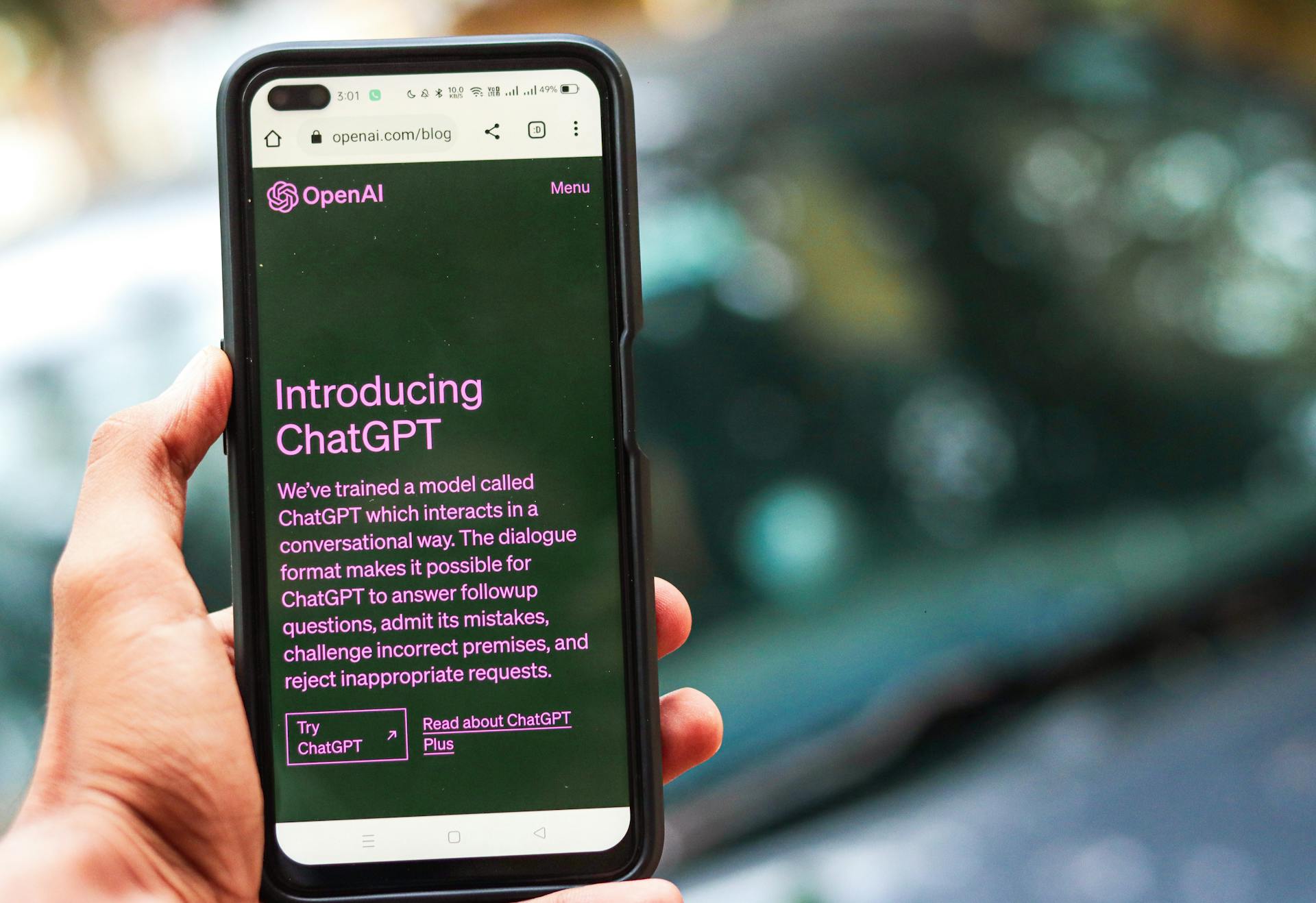
Introducing ChatGPT.ai: Streamlined Experience for AI-powered Conversations
Artificial Intelligence (AI) has revolutionized the way we interact with technology, and one remarkable example of this is ChatGPT.ai. Designed to facilitate engaging and dynamic conversations, ChatGPT.ai offers a unique platform where users can harness the power of AI for various purposes. In this blog post, we will guide you through the essential steps to get started with ChatGPT.ai, including creating an account, logging in, and troubleshooting login issues. Additionally, we will explore how you can manage your login credentials effectively and enhance the security of your ChatGPT.ai account for a seamless and worry-free experience. Let’s dive in!
Creating A Chatgpt.ai Account
Welcome to our blog post on how to create a Chatgpt.ai account! Chatgpt.ai is an innovative platform that allows users to interact with AI-powered chatbots. Whether you are a developer, a business owner, or simply curious about artificial intelligence, creating an account on Chatgpt.ai is the first step towards accessing its powerful features and capabilities.
Before diving into the account creation process, it’s important to note that Chatgpt.ai is an advanced AI platform developed by OpenAI. To start your journey, visit the official website and locate the login/signup page. Click on the signup button to begin the process of creating your Chatgpt.ai account.
Once on the signup page, you will be prompted to enter your credentials. Provide a valid email address and choose a strong password to protect your account. Remember, a strong password is one that contains a combination of uppercase and lowercase letters, numbers, and special characters.
After providing your email and password, click on the “Create Account” button. You will then receive a verification email at the provided address. Open your email inbox and locate the verification email sent by Chatgpt.ai. Click on the verification link to confirm your account and activate it.
To enhance the security of your Chatgpt.ai account, it is recommended to enable two-factor authentication (2FA), if available. This additional layer of security requires you to provide a verification code in addition to your password when logging in.
Congratulations! You have successfully created your Chatgpt.ai account. You can now log in using your email address and password to explore the platform’s features and build AI-powered chatbots.
| Benefits of Creating a Chatgpt.ai Account |
|---|
| 1. Access to state-of-the-art AI models |
| 2. Build and deploy AI-powered chatbots |
| 3. Collaborate with other developers and users |
| 4. Stay up to date with the latest AI advancements |
| 5. Gain insights from AI-generated responses |
Creating a Chatgpt.ai account opens a world of possibilities for developers, businesses, and AI enthusiasts alike. It allows you to tap into the power of advanced AI models and build innovative chatbots that can revolutionize interaction and customer support. So why wait? Create your Chatgpt.ai account today and unlock the potential of artificial intelligence!
Logging In To Chatgpt.ai
Logging in to Chatgpt.ai is a quick and easy process that allows you to access a wide range of powerful AI models for various applications. Whether you’re a developer, researcher, or simply curious about the potential of AI, this blog post will guide you through the steps to log in to Chatgpt.ai and start harnessing its capabilities.
Before we dive into the specifics of logging in, let’s take a moment to highlight the incredible features and benefits of Chatgpt.ai. Powered by OpenAI, Chatgpt.ai is an AI language model that excels in generating human-like text responses. Its versatility spans from answering questions and generating code to creative writing and much more.
To get started with Chatgpt.ai, you’ll need to create an account if you don’t already have one. Once you’ve signed up and verified your email address, you can proceed to the login page. Enter your username and password in the designated fields, ensuring their accuracy.
If you encounter any login issues, don’t fret. Troubleshooting is a crucial part of any online platform experience, and Chatgpt.ai is no exception. Some common troubleshooting steps for login issues include resetting your password, clearing your browser cache, and ensuring you have a stable internet connection. Additionally, checking for any system updates or contacting the support team can also help resolve any unexpected setbacks.
Managing your login credentials is essential to maintaining the security and integrity of your Chatgpt.ai account. Remember to choose a strong, unique password that combines uppercase and lowercase letters, numbers, and special characters. Avoid using easily guessable information, such as your name or birthdate, as part of your password.
In addition to a strong password, consider enabling other security measures, such as two-factor authentication (2FA). By activating 2FA, you’ll add an extra layer of protection to your Chatgpt.ai account, requiring a verification code alongside your password for each login attempt.
With the necessary steps in place, you can now confidently log in to Chatgpt.ai and unleash the power of AI. Harness its capabilities to drive innovation, streamline workflows, and delve into the realms of advanced language processing. Whether you’re a seasoned AI enthusiast or just embarking on your AI journey, Chatgpt.ai offers an exciting playground for exploring the vast potential of artificial intelligence.
Troubleshooting Login Issues
Are you having trouble logging into your Chatgpt.ai account? Don’t worry, you’re not alone. Login issues can be frustrating, but with a little troubleshooting, you’ll be back to generating fantastic AI-powered content in no time.
There could be several reasons why you’re encountering login problems. It’s important to identify the cause to effectively resolve the issue. Let’s explore some common troubleshooting steps that can help you get back into your Chatgpt.ai account.
Firstly, double-check your login credentials. Ensure that you are entering the correct username and password. Remember, passwords are case-sensitive, so make sure your caps lock is off and verify any special characters you may have used. If you’re still having trouble, try resetting your password using the “Forgot password” option on the login page.
- If you’re certain that your credentials are correct, the next step is to check your internet connection. Poor connectivity can often hinder the login process or cause it to time out. Make sure you have a stable internet connection and try logging in from a different browser or device to rule out any local issues.
- Clearing your browser cache and cookies can also help resolve login problems. Over time, these temporary files can accumulate and interfere with website functionality. Go to your browser settings, find the option to clear browsing data, and select cache and cookies. After clearing these files, try logging in to Chatgpt.ai again.
| Issue | Solution |
|---|---|
| Forgot password | Use the “Forgot password” option to reset your password |
| Poor internet connectivity | Ensure a stable internet connection and try a different browser or device |
| Cache and cookie buildup | Clear browser cache and cookies |
In some cases, browser extensions or plugins can interfere with the login process. Disable any extensions you have installed and attempt to log in again. If the issue persists, try accessing Chatgpt.ai in incognito mode or a private browsing window to eliminate potential conflicts.
If none of these troubleshooting steps resolve your login issues, it’s advisable to reach out to Chatgpt.ai support for further assistance. They will be able to investigate the issue more closely, identify any technical problems, and provide you with the necessary guidance to regain access to your account.
Managing Login Credentials
In today’s digital world, managing login credentials is of utmost importance. With the increasing number of online platforms and services we use on a daily basis, it can be quite challenging to keep track of all the passwords and usernames. However, proper management of login credentials is vital for the security of our personal information and online accounts. In this blog post, we will discuss some effective strategies and best practices for managing login credentials.
One of the first steps in managing login credentials is to create strong and unique passwords for each of your online accounts. Using the same password for multiple accounts can put your security at risk. It is recommended to use a combination of uppercase and lowercase letters, numbers, and special characters in your passwords. Additionally, avoid using easily guessable information such as names, birthdays, or common words. Consider using password management tools that can generate and store complex passwords securely.
Another important aspect of managing login credentials is to regularly update and change your passwords. Many platforms and services require their users to change their passwords periodically as a security measure. Even if it is not explicitly mentioned, it is a good practice to change your passwords at least every three to six months. This reduces the risk of unauthorized access to your accounts and enhances the security of your login credentials.
Furthermore, it is essential to store your login credentials securely. Avoid writing down passwords on sticky notes or storing them in easily accessible files on your devices. Instead, consider using a password manager application. These applications encrypt and store your passwords in a secure vault, requiring you to only remember one master password. This not only makes it easier to manage and organize your login credentials but also adds an extra layer of security.
- Use two-factor authentication whenever possible. Two-factor authentication adds an extra layer of security to your login process by requiring you to provide an additional piece of information (such as a verification code sent to your phone) along with your password. This significantly reduces the risk of unauthorized access to your accounts even if your login credentials are compromised.
| Username | Password |
|---|---|
| example_username1 | example_password1 |
| example_username2 | example_password2 |
In conclusion, managing login credentials is crucial for maintaining the security of our online accounts. By creating strong and unique passwords, regularly updating them, storing them securely, and using two-factor authentication, we can significantly reduce the risk of unauthorized access to our accounts. Remember, the security of your personal information is in your hands, so take the necessary steps to manage your login credentials effectively.
Enhancing Security For Chatgpt.ai Login
As technology advances, the importance of ensuring the security of our online accounts cannot be stressed enough. With the increasing popularity of Chatgpt.ai, it becomes crucial to take measures to enhance the security of our login credentials and protect our valuable information. In this blog post, we will discuss some practical tips and best practices to strengthen the security of your Chatgpt.ai login.
1. Use a Strong and Unique Password:
When it comes to choosing a password for your Chatgpt.ai account, it is essential to use a strong and unique one. Avoid common passwords, such as “123456” or “password,” as they can be easily guessed by malicious individuals. Instead, create a password that consists of a combination of uppercase and lowercase letters, numbers, and special characters. Additionally, ensure that you do not reuse the same password for other accounts to minimize the risk of multiple account breaches.
2. Enable Two-Factor Authentication:
Two-factor authentication (2FA) adds an extra layer of security to your Chatgpt.ai login process. By enabling this feature, you will be required to provide an additional piece of information, such as a verification code, along with your password. This ensures that even if someone manages to obtain your password, they will still be unable to access your account without the second factor of authentication. It is highly recommended to enable 2FA for your Chatgpt.ai account to significantly reduce the risk of unauthorized access.
3. Keep Your Login Credentials Private:
One of the main causes of account breaches is the sharing of login credentials. It is important to remember that your Chatgpt.ai account is for your personal use only, and you should never share your login information with anyone else. Additionally, be cautious of phishing attempts where malicious actors try to trick you into revealing your login details through fraudulent emails or websites. Always double-check the URL when entering your login credentials and ensure you are on the official Chatgpt.ai website to avoid falling victim to such scams.
Incorporate these Security Measures Today:
By implementing these security measures, you can significantly reduce the risk of unauthorized access to your Chatgpt.ai account. By using a strong and unique password, enabling two-factor authentication, and keeping your login credentials private, you are taking vital steps to enhance the security of your account. Remember, it is always better to be safe than sorry when it comes to online security. Protect your valuable information and enjoy a secure experience with Chatgpt.ai.
Frequently Asked Questions
How do I create a ChatGPT.ai account?
To create a ChatGPT.ai account, visit the official website and click on ‘Sign Up’. Fill in the required information, such as your name, email address, and password, and follow the prompts to successfully create your account.
What should I do if I encounter login issues on ChatGPT.ai?
If you experience any troubles logging in to ChatGPT.ai, try resetting your password by clicking on the ‘Forgot Password’ link on the login page. Follow the instructions sent to your registered email address to reset your password and regain access to your account.
How can I manage my login credentials on ChatGPT.ai?
To manage your login credentials, sign in to your ChatGPT.ai account and navigate to the ‘Account Settings’ or ‘Profile’ section. From there, you can update your email address, change your password, or modify other account details related to your login credentials.
What measures can I take to enhance security for my ChatGPT.ai login?
To enhance security for your ChatGPT.ai login, consider enabling two-factor authentication (2FA). This additional layer of security requires you to enter a verification code sent to your registered mobile device or email address alongside your password. It adds an extra level of protection to prevent unauthorized access to your account.
How do I log in to ChatGPT.ai?
To log in to ChatGPT.ai, visit the official website and click on ‘Login’. Enter your registered email address and password in the provided fields, and click ‘Login’ to access your account.
Can I implement two-factor authentication on my ChatGPT.ai account?
Yes, you can implement two-factor authentication (2FA) on your ChatGPT.ai account. This option is available in the ‘Account Settings’ or ‘Security’ section of your profile. Follow the prompts to enable and set up 2FA for enhanced security.
What should I do if I forget my ChatGPT.ai account password?
If you forget your ChatGPT.ai account password, go to the login page and click on ‘Forgot Password’. Follow the instructions sent to your registered email address to reset your password and regain access to your account.








